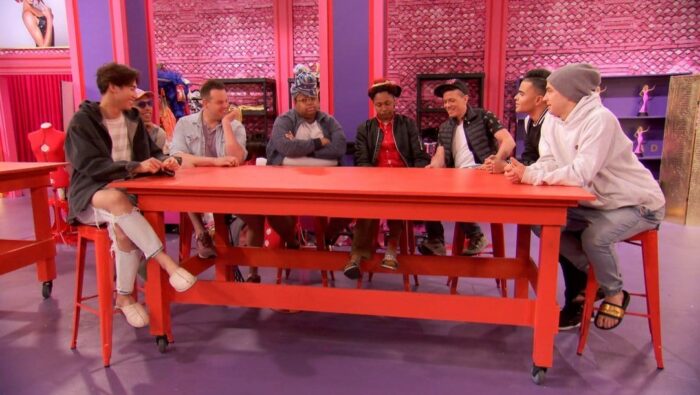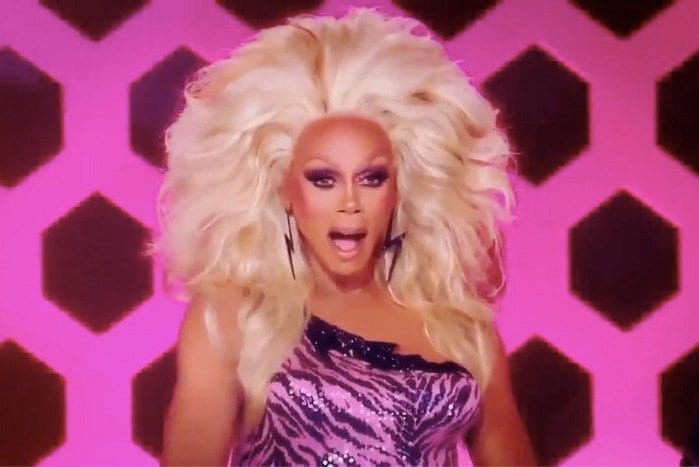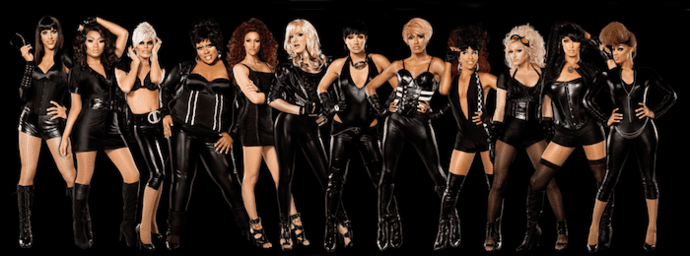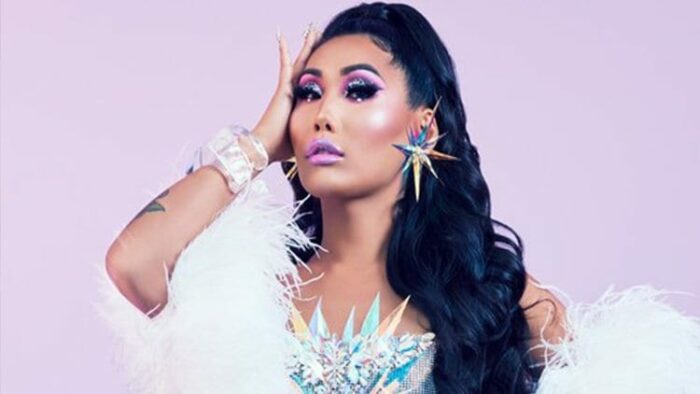“Charisma, Uniqueness, Nerve & Talent”—I’ve heard the phrase for nearly 10 years. Hunched over my laptop streaming LogoTV, I fell hard for RuPaul’s Drag Race in its second season. The colors are bright, the glitter and glitz a feast for the eyes, but ultimately it was the format that hooked me; it made me laugh and care deeply for its participants in a way other reality shows fell short. RuPaul’s Drag Race presents both pure entertainment while at the same time providing a window into the world of drag.
If you take the acronym for the above phrase—the four qualities RuPaul looks for in a contestant— you get a word that is a common curse word in the United Kingdom and a pretty harsh one in the United States: C.U.N.T. How it took me 9 years to get that is an odd miracle (stop laughing at me). The dichotomy of that phrase with its acronym explains RuPaul’s Drag Race in a nutshell. It takes itself seriously, elevating the art of drag and pushing contestants do the same, and yet lets us in on the joke. In many ways I found writing this article difficult. How do I define what this show has done to culture? How do I capture it all?

Drag started in theater, particularly when women were not allowed to act in plays. The history of drag is a long and complex one but in a short video for Allure, some of the show’s cast members provide a helpful summary for those interested in the context. RuPaul Charles is the most well known drag queen of the 1990s with appearances in several films and his hit song “Supermodel (You Better Work).” He signed a modeling contract with MAC cosmetics in 1994 in addition to having his own talk show on VH1 that year. Ru worked through the years to infiltrate the mainstream and elevate the art of drag. With the development of RPDR, he gave a platform for future queens to do the same.
More Than Just A Competition
Competition shows where talent rules instead of pure strategy or physical endurance have always drawn me in. Whether it was America’s Next Top Model or Project Runway, I enjoyed watching talent put through a gauntlet. I watched other reality shows on and off but nothing in my life has been as consistent as RPDR. The basic format of the show comprises mini and max challenges, which often feature acting, singing, and dancing. The challenges do change season by season but some stay the same, such as the library reading challenge. Because reading is what? Fundamental.
“Reading” is defined as pointing out a flaw and exaggerating it, most often for comedy. Vernacular such as that slipped into mainstream language and understanding because of the show’s growing popularity. The internet allowed me to stream the show and helped build its exposure. GIFs became an internet language of their own and this show has provided some amazing ones. With the captions on them we get to see a lot of the language of the drag queen culture. “Yas” and “spilling the tea” are phrases used on the show that are ubiquitous on the internet now. There is a problematic adoption of them by mainstream culture (this Wired article discusses this and their origins in the African American and Latinx communities) but mainstream cultures still uses them.
Fierce And Forward
Winner or winners of the main challenges win cash and other prizes (or immunity in some seasons) and the ultimate prize now adds up to $100,000 in addition to other sponsored prizes. Each runway show at the end has a theme. Guest judges get to say their opinions. The guest list for judging and appearances range from cult heroes like Elvira to political figures like Speaker of the House Nancy Pelosi. There is a group of safe girls and then the bottom two are chosen. RuPaul is the ultimate judge and the bottom two girls have to lip sync for their lives. Untucked, which now airs immediately after and is now tied into the show if you DVR it, shows the girls preparing knowing they might have to lip sync and is a place where the emotions and drama really come out.
The lip sync is where the queens get to show what they do in their club performances, if they do perform in clubs—there are a lot of different kinds of drag performance including pageant and comedy. Sometimes it’s next-level amazing, as in the Season 11 showdown between Brooke Lynn Hytes and Yvie Oddly to Demi Lovato’s “Sorry Not Sorry”; they are both immensely talented dancers who contrasted and complemented each other (Vulture has a recap of the performance with GIFs to study every move). The gasp face of RuPaul was instantly GIFed and he did not hesitate to keep them both. This is the kind of drama that fans live for and I had a similar dropped jaw to Ru’s. Prophetically, it was these two who lip synced for the title in the finale and Yvie snatched that crown. Natural competitive drama fuels the show and big personalities mean big emotions.

Representation Matters
My earliest exposure watching RuPaul’s Drag Race was exclusively streaming it all on Logo. I also watched Drag U, which was a makeover show for a chance to watch my favorite queens more. I discovered cosplay at about the same time and eventually would fall head-first in that world as well. I immediately connected to the push to entertain creatively and to take on another persona. But beyond that, I got to know the real people behind all the makeup. The transformations were incredible every time. RuPaul encourages the queens to be vulnerable, and I got to hear stories of family rejection, losing friends and partners to HIV, living with HIV themselves, drugs, and violence committed against the queens just for being themselves.
On Untucked, the most recent season Miss Congeniality winner, Nina West, told the story of coming out in college. He was not out to his family but was out on campus. When he ran for student government, he received threatening phone calls and his dorm was vandalized. He came out to his parents fearing for his life. This was shortly after the violent death of gay University of Wyoming student Matthew Shepard and West said it was one of the factors that made this time in his life so scary. He, like others before him, lay their pain out, emptying their souls while putting on makeup or after a harsh critique, but it never feels exploitative. They are drag queens but most are also gay men living in a society that, despite the accolades of the TV show, still find their lives threatened. Younger queens on the show realize they have come up in a time with more acceptance and it’s a special treat to see them learning their history through interactions with older queens. They all grow from this, and growth is the goal; as Ru always ends the show saying, “If you can’t love yourself, how the hell you gonna love somebody else?”

We’re All Born Naked And The Rest Is Drag
That’s a direct quote from Mama Ru (the queens often call him that in the show). Around the same time I started watching RPDR, I started the hobby of cosplay, particularly Doctor Who cosplay. Between the makeup and the costume work on the show, the connection to my cosplay world was an easy leap. It was dress-up elevated: taking something I loved and making a more public show of it, taking on the role of the character I dressed as much in the same way the drag queens did. I was not in drag but I recognized what Ru was saying—that even putting on a t-shirt and jeans is extra to who we are and making a statement. Drag queens exaggerate that concept.
Every season I picked a favorite (though they don’t always win). Season 2 Miss Congeniality Pandora Boxx takes the honor of being my first favorite drag queen and still is a legend. His Snatch Game of Carol Channing is hard to beat (though Jinkx Monsoon’s Little Edie from Grey Gardens is a close second for me). For those unfamiliar, Snatch Game is played similar to the Match Game, a ’60s show that had celebrities try to answer the question like the contestants did. The queens have to impersonate a celebrity, and it’s been a make-or-break challenge for many queens since it involves improv acting and comedic timing in addition to looking the part.
Snatch Game is one of my favorite challenges to watch because I feel a direct connection to the challenge as a cosplayer who has worked to embody a known character. As I found out more about Pandora, I learned that we both loved Doctor Who and that he did drag queen version of cosplay, so he was part of my cosplay world. This realization of the blending of these two worlds further expanded as I made new friends in the cosplay community—friends who transitioned to their authentic selves gender- and sexuality-wise through the hobby and let me in on their struggles. While watching contestants on the show questioning their gender, my friends were doing the same. I cannot say which had the greater effect but it built in me a grace and compassion.
A Brighter View
RPDR exposed me to a wider view, one I had seen from the outside locally with some drag. Because representation was low on television, too often my knowledge of the LGBT+ community came in bits. Some knowledge came from Golden Girls and other TV shows. I watched To Wong Foo, Thanks for Everything! Julie Newmar (which is still relevant and a wonderful film) and The Adventures of Priscilla, Queen of the Desert. But as excellent as these films are, they did not give me a full context for drag. RPDR expanded my view with its diversity in styles of the art of drag and the language of the culture.
Logo was the channel for LGBT+ and even watching ads during the episodes provided a different view from my mainstream television watching. They talked about HIV and AIDS when it felt like it had faded in concern in the wider and straight world. As I grew up, a gay couple lived next door but their relationship not discussed. My family, progressive as they were, just didn’t talk about it. I found all the pieces on my own and, bit by bit, I understood more of that world with all its joy and pain. As the show progressed, so did the world around me, slowly and with stops and starts much like the progress of any of the contestants on the show (well, minus Bianca Del Rio, but you’ll have to watch Season 6 to see that). I attended legal weddings of friends of all orientations.
In recent years, Pride has become something corporations scramble to pander to and capture the market. RuPaul’s DragCon, which now happens both in Los Angeles and New York, is run like the conventions I am intimately familiar with through cosplay. Booths are set up for meet-and-greets with your favorite drag queens much in the same way as I meet actors from my favorite shows. Kids getting their photos with stars from RPDR seemed something far-fetched if you look at the world when the show premiered in 2009.

Controversy Leads To Growth
RuPaul’s Drag Race developed over time to reflect more inclusive and sensitive language, especially regarding the transgender community. Being transgender is not the same as drag. Drag is a person dressing up as the opposite gender, typically in an exaggerated theatrical manner. Transgender people are those whose sense of personal identity and gender does not correspond with their birth sex. But drag queens can be trans and the show has had several contestants come out on the show and after.
There was controversy surrounding an apparent restriction on transitioning and competing. RuPaul received criticism for his statements on the matter, including a statement to The Guardian where he said that because Miss Peppermint had not physically transitioned with breast implants, it was fine. When asked if he would allow a fully transitioned contestant, he replied, “probably not.” Season 6 queen Gia Gunn responded to Buzzfeed News. “I respect that this is RuPaul’s decision, but at the end of the day I don’t feel that my transness has anything to do with me as an artist,” Gunn said. “If you’re a fierce queen and you bring it to the runway, you should be accepted as one and nothing more and nothing less.” Miss Peppermint competed on the show and openly talked about her transition. Gunn later competed after she transitioned in RuPaul’s Drag Race All-Stars Season 4, proving that the show developed and changed with time.
Pride Is For Everyone
I believe above all else, during Pride month, we need to reflect on the bravery of each and every one of the queens who stepped on that runway. This year we remember 50 years since the Stonewall Riots: a series of events leading to standing up to the police arresting LGBT people just trying to live their lives, some of them drag queens and transgender individuals who were mad enough and bold enough to throw bricks at cops—cops who raided clubs to arrest gay people. 50 years changed so much with gay marriage becoming legal and so many other changes, but battles remain and the backlash is still real. The violence against the LGBT+ community is still a very real and present danger. The Human Rights Campaign estimates at least 26 transgender people were murdered in 2018 and the awful trend continues in 2019. RPDR contestants are immediately in the global spotlight, exposing their art to the entire world and placing their life on the line for more than just $100,000. Season 10 winner Aquaria said that the show has opened doors and made things a little safer for drag queens by providing understanding. It cannot be said enough for all minorities that representation matters.
RuPaul said recently on The View that drag will never be mainstream. It’s hard to imagine that it isn’t, with DragCon conventions on both coasts and the show now airing on major cable network VH1. But RuPaul and RPDR Season 11 Miss Congeniality Nina West in a subsequent interview posted online made the point clear: drag is a queer art form, and by its nature is subversive and cannot be mainstream. It has drawn the mainstream in rather than pulled drag into its world.
But drag is much more than RPDR. Go to your local show, if you have one. Look up queens who have not competed. Start with Coco Peru, one of my favorites. Because if there is one word for drag I’d use most, it’s joy. When the world gets dark—and, my friends, it gets a murky grey most days now—that bright pink workroom calls you, the sequins and the glitter picking up the smallest bit of light to reflect joy. Look for something a little less serious, even if our world demands serious attention. We can do both and need both.

